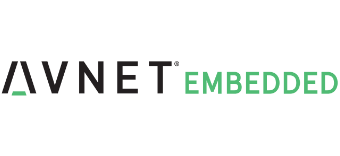Compliance with IEC 62368-1 will be mandatory for all ITE and A/V products sold in North America by December 20, 2020. The EU will adopt the same December 20, 2020 date for such products being sold in Europe.
The scope of the new IEC 62368-1 standard:
The new IEC 62368-1 standard applies to all equipment currently subject to IEC 60950-1 and IEC 60065 safety standards, and further products are being to be brought within its scope because it’s an evolving standard.
A few of the effects the IEC 62368-1 standard is having on the technology industry:
• New requirements for computing and networking products such as servers, PCs, routers, notebooks/laptop computers, tablets and their power supplies. This also encompasses insulating liquids, which are increasingly being used in applications for cooling (e.g., in cloud server rooms and data centers) in which power components are immersed in liquid. Electronics in insulating liquids require testing under the IEC 62368-1 standard to ensure safe operation.
• Updated safety requirements for robotic work cells with hard stop and interlocking doors. The standard includes new requirements for emergency stop systems that aim to keep workers safe and free from robot-related injuries.
• Strict requirements for fully insulated winding wires with clear restrictions on the application of fully insulated wires (FIW). Wireless power transmitters have a completely new clause that safeguards smartphone users who want to charge their phones wirelessly. This has bearing on IoT devices in that it can affect the way designers approach native UI dashboard applications.
• Consumer electronics such as amplifiers, home theater systems, digital cameras and personal music players.
• Displays and display units including monitors, TVs and digital projectors.
• Telecommunication products such as network infrastructure equipment, cordless and cellular phones, and similar
communication devices, including battery-powered devices.
• Office appliances like copiers, postage machines and document shredders.
• Various other types of audio/video, information and communication technology equipment used in homes, schools, data
processing, commercial and professional environments.
How compliance is achieved:
Avnet is uniquely positioned with its regulatory partners to help you evaluate and determine the next steps in transitioning to IEC 62368-1 compliance. We’ve streamlined the process, so you’ll only need to provide three items:
- An existing IEC 60950-1 Nationally Recognized Testing Laboratory (NRTL) report
- A bill of materials
- A list of countries where you will be marketing your product
With that information, Avnet’s regulatory team will provide a detailed and customized quote within two business days. While Avnet can move quickly in the quoting process, the application will still need to be submitted an NRTL lab for final approval. This step can take an additional two to three weeks, which makes it imperative to move quickly with the upcoming December deadline fast approaching.
Early compliance = competitive advantages.
Aside from avoiding any unforeseen last-minute obstacles, including longer wait times that may be caused by a late rush, early engagement offers you several competitive advantages.
By engaging early, manufacturers may:
- Have the potential to reduce manufacturing expenses by preventing the costly reworking of existing inventory.
- Leverage marketing advantages from those customers accepting only the new IEC 62368-1 standard.
- Introduce new technology and products to market more quickly by proactively designing to the new standard.
Non-compliant products cannot be sold in a number of major world markets beyond the effective adoption date. Start planning now to avoid costly delays by ensuring your products carry IEC 62368-1 certification.
Contact the Avnet Embedded team to learn more about how we can assist you through the IEC 62368-1 transition.
We look forward to working together,
Rodger Osgood
Sr. Regulatory Compliance Engineer




